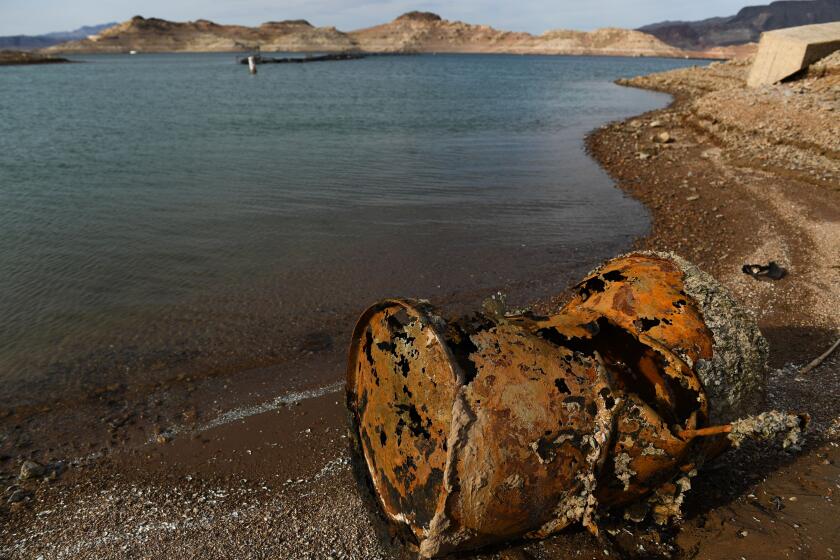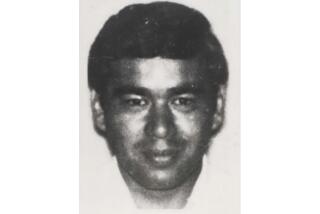Skeletal remains found at Lake Mead belong to man who drowned in 1974

- Share via
Human remains found at Lake Mead in October have been identified as those of a North Las Vegas man who drowned in 1974, Clark County officials said.
The skeletal remains of Donald P. Smith, 39, were discovered in multiple locations at Lake Mead on Oct. 17 and 19, Stacey Welling, a Clark County spokesperson, said in a news release. The death was determined to be accidental by the Clark County coroner’s office, according to officials.
“The identification was based on DNA analysis and reports from the original incident,” officials said.
As Lake Mead shrinks after almost two decades of severe drought, accumulated items on the lakebed are being exposed.
Four sets of remains, including Smith’s, were found at the lake last year amid historically low water levels.
On May 1, the remains of a male who died of a gunshot wound in what the coroner’s office deemed a homicide were found in a barrel at Hemenway Harbor. The person is still unidentified, but he may have been killed between the mid-1970s and early 1980s, according to the Las Vegas Metropolitan Police Department.
Six days later, the skeletal remains of Thomas Erndt, 42, were found near Callville Bay. His drowning was reported on Aug. 2, 2002, but the coroner’s office has yet to determine the cause and manner of death.
The latest discovery in Lake Mead’s receding waters comes less than a week after a body in a barrel was discovered.
In July and August, the remains of an unidentified man were found near the shoreline of Boulder Beach. Some of the remains were found by park visitors.
The coroner’s office continues to attempt to identify the remains but noted that DNA and other forms of identification can be affected by the elements.
“The process for identifying the remains includes examinations to determine the gender and approximate age, height and weight of each decedent; the collection of DNA samples, the quality of which can be greatly affected by time and environmental conditions,” Clark County officials said.
More to Read
Sign up for Essential California
The most important California stories and recommendations in your inbox every morning.
You may occasionally receive promotional content from the Los Angeles Times.













